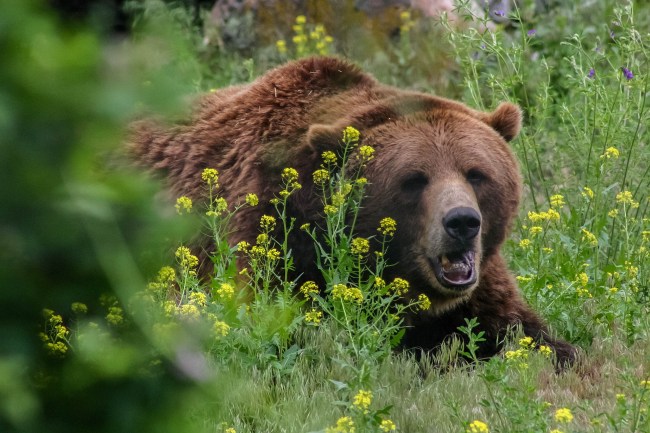
Pixabay / Joe Breuer
Chances are you’ve never had to survive a bear attack. There are only about 40 bear attacks per year globally and an average of 11 of those happen in North America. I don’t need to explain to you how rare that is with a North American population of close to 600 million.
Alas, the National Park Service wants to ensure you stay safe out there. With millions of Americans hitting the trails as a safe outdoor activity after an extended period of National Parks being relatively empty it’s easy for the bears to get spooked. It didn’t take long for the wild animals to get accustomed to not seeing humans and this has led to an increase in sightings at various parks.
The National Park Service took to Facebook to issue guidance on how to survive a bear encounter, should you ever find yourself in that situation, and they want to be explicitly clear that you shouldn’t push your slow friend down on the ground and sacrifice them as bait even if it means you might escape.
Here’s what they had to say:
“READ: Please don’t run from bears or push your slower friends down in attempts of saving yourself.
As a follow-up to a previous post, if you come upon a stationary bear, move away slowly and sideways; this allows you to keep an eye on the bear and avoid tripping. Moving sideways is also non-threatening to bears. Do NOT run, but if the bear follows, stop and hold your ground. Like dogs, they will chase fleeing animals. Do NOT climb a tree. Both grizzlies and black bears can climb trees. Do NOT push down a slower friend (even if you think the friendship has run its course).
Stay calm and remember that most bears do not want to attack you; they usually just want to be left alone. Don’t we all? Identify yourself by making noise so the bear knows you are a human and not a prey animal. Help the bear recognize you as a human. We recommend using your voice. (Waving and showing off your opposable thumb means nothing to the bear) The bear may come closer or stand on its hind legs to get a better look or smell. A standing bear is usually curious, not threatening.
P.S. We apologize to any “friends” who were brought on a hike as the “bait” or were sacrificed to save the group. You will be missed.”
Will you run into a bear this Summer or Fall? How TF should I know? I don’t know who you are, where you live, or which parks you’re hiking.
I’ve encountered enough bears in the wild to count on one hand throughout my entire life but somehow these safety tips are drilled into my head. It’s like how we were all taught to ‘stop, drop, and roll’ and be wary of quicksand despite never having come across quicksand once in my entire damn life and also never having to use ‘stop, drop, and roll’ nor have I ever had to test the heat of a doorknob to see if there’s fire on the other side. I’m also not convinced I’d use any of that survival information in a moment where I might need it.
Nevertheless, don’t push your slow friends over. They might survive the bear attack and you’ll never live it down. Just move away slowly and sideways. That’s all you can really do to increase your chances of survival.
